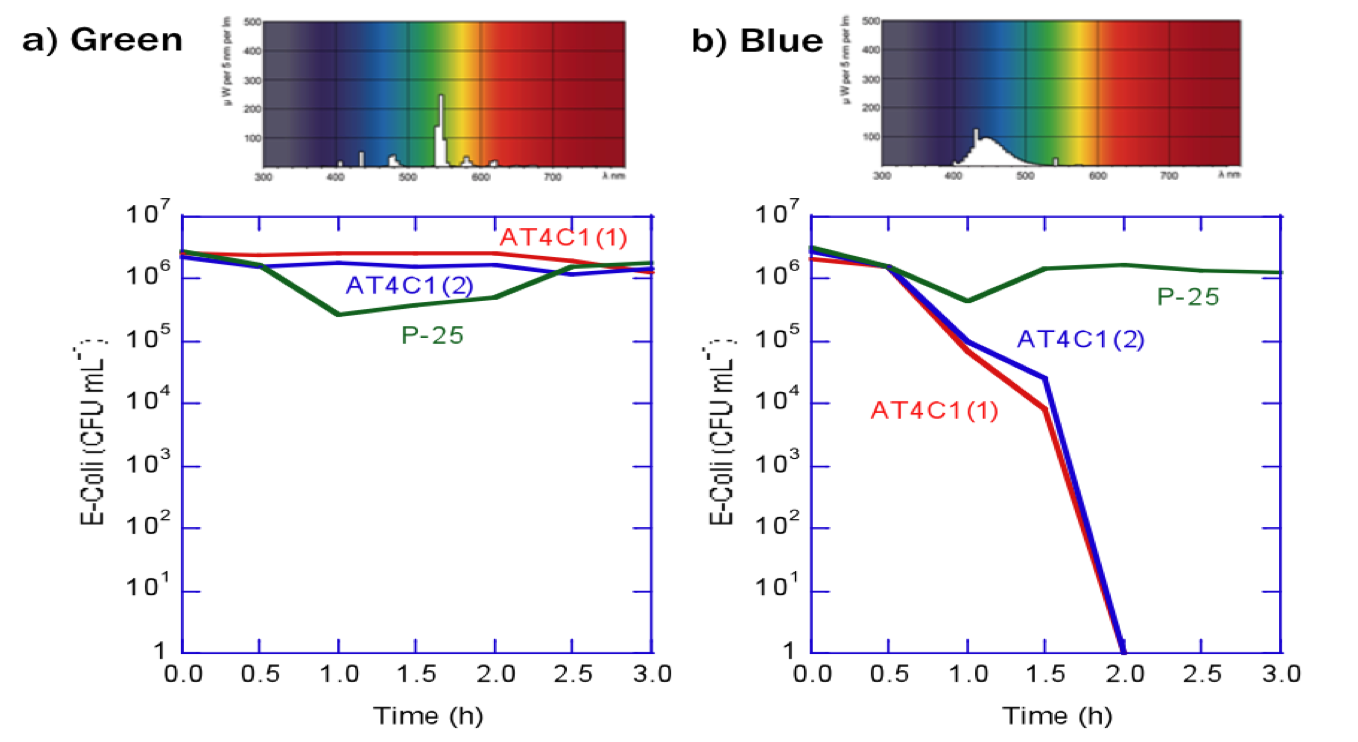Mechano-chemical surface modification of TiO2 with amino acids
Much work has been focused on the incorporation of nitrogen and/or fluorine into titania nanoparticles, in order to improve their visible light response. Out of a number of functionalization techniques, dry processing such as co-milling oxide particles and colloid chemical processing of titania fine particles have shown promise.
 Antibacterial photocatalytic activity under green and blue lights of P-25(Titania) and GLY-modified P25 after annealing at 500 oC in air
Antibacterial photocatalytic activity under green and blue lights of P-25(Titania) and GLY-modified P25 after annealing at 500 oC in air
Changes in the colloid-chemical and photocatalytic properties of titania nanoparticles by attrition milling in the presence of glycine (Gly) and subsequent heat treatment were demonstrated[1].
By attrition milling the Dv50 was decreased from 123 nm to 85 nm. Interfacial reactions between titania and Gly were implied by FT-IR, from the blue shift of the COO- related vibrational bands by 25 cm-1.
A bimodal N1s XPS peak similar to that from the reported titania – amino acid complex is another indication of the complex formation with the participation of nitrogen.
When the dispersion was dried and calcined at 500 oC in air, the powder showed pale yellow coloring and exhibited significant visible light absorption, confirmed by diffuse reflectance spectroscopy.
The fired product demonstrated a high photocatalytic antibacterial activity by irradiation of blue light centered at around 440 nm, by using Escherichia coli as a model bacterial species.
The results imply that the present Gly-modified titania nanoparticles could be used for indoor bacteria attack under soft blue illumination.
More information and example:
1. M. Senna, N. Myers, A. Aimable, V. Laporte, C. Pulgarin, O. Baghriche and P.Bowen ”Modification of titania nanoparticles for photocatalytic antibacterial activity via a colloidal route with glycine and subsequent annealing” In press J. Mater. Res. 2012